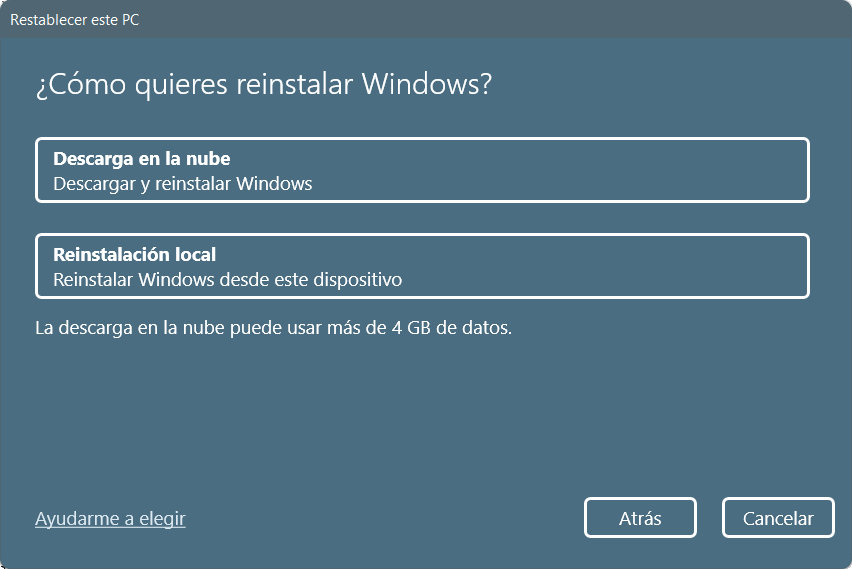To “Reset”, “Restore” or “Recover” an operating system such as Windows 11 means to return it to its factory settings as it was when we first installed it. There are different ways to do this, but today we suggest the fastest one, which is through a single command in the Windows console.
Resetting Windows 11 to factory settings is a maintenance task that every user should know about because sooner or later they will have to use it. And it is so that any operating system and more Windows, it ends up degrading simply with time and use due to installation/uninstallation of applications, drivers, failure of some update of the same system or introduction of some type of malware from which no one is safe.
You will notice this in the case of random or chronic system crashes, various slowdowns in its execution or increased boot time due to increased load at startup, added services or greater demands on the system registry, the database where the operating system stores everything of the type of information and which will not stop increasing from the same installation . Personally, I see it as routine maintenance that needs to be done from time to time, as a way to anticipate bugs that will or will eventually come.
Reset Windows 11 with a single command
This internal maintenance task is halfway between creating restore points and is easier and faster to perform than a complete installation from scratch. Microsoft has improved it from Windows 10 by adding the interesting news of reinstallation from the cloud, without the need to use physical media for recovery or use local files, sometimes problematic if we have files damaged or attacked by malware.
If your PC isn’t working properly or, as we said, you’re using it as routine maintenance, you can access this internal tool from the general Settings > Update & Security > Recovery > Recovery app.
But there is an even faster option and this shows the capabilities of the Windows console, in this case in its simplest command line variant. You can access it in different ways, as we suggest in this practical primer, which consists of only two steps, without recommending you, as always when using this type of application, to create a backup of your personal files:
- Right-click the Start button and select Command Prompt (Admin).
- Enter the command in the terminal
systemreset --factoryreset
- There is nothing left to do but to choose between the two options you will see in the image:

They explain themselves. In both cases, applications and system settings will be removed as the tool will access the Windows RE (Windows Recovery Environment), erase and format the partitions before installing a fresh copy of Windows 10.
If you use the option “Keep my files”, the tool will create a copy of them to return them to their original location after installing the system. In the case of selecting the o “Remove All”the tool allows you to save files located in other storage units other than the main one where the operating system is installed, but as we recommend, it is better to do it earlier.
For efficient recovery, you can choose to use local drives or a new option using the cloud. This option has been available in macOS and various GNU/Linux distributions (such as Debian) for years and has been incorporated into the latest versions of Windows 10. It is a very useful option as it allows you to restore damaged computers or restore systems to a clean copy without the need for an installer media or using local recovery images or partitions.

After the process is complete, you can go to Windows Update to update your system to the latest version of security and features, install the apps and games you need, and the drivers provided by Microsoft or the device or component manufacturer.
we insist. Reset Windows 11 it is a very useful feature which can be done in a variety of ways, all very easy to operate. Do not doubt that you will have to use it due to some error, destabilization of the system
